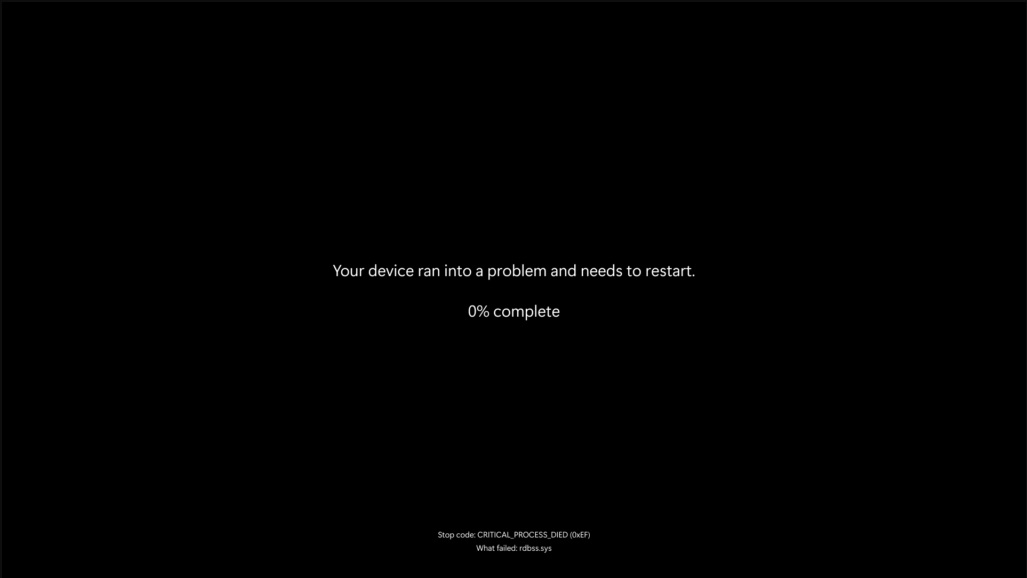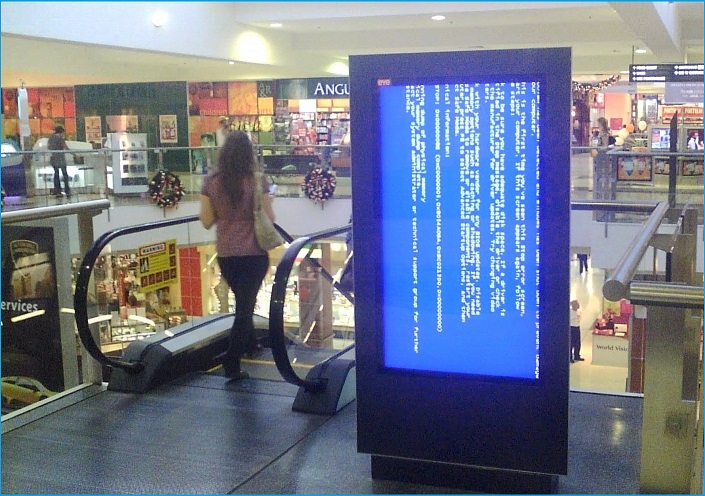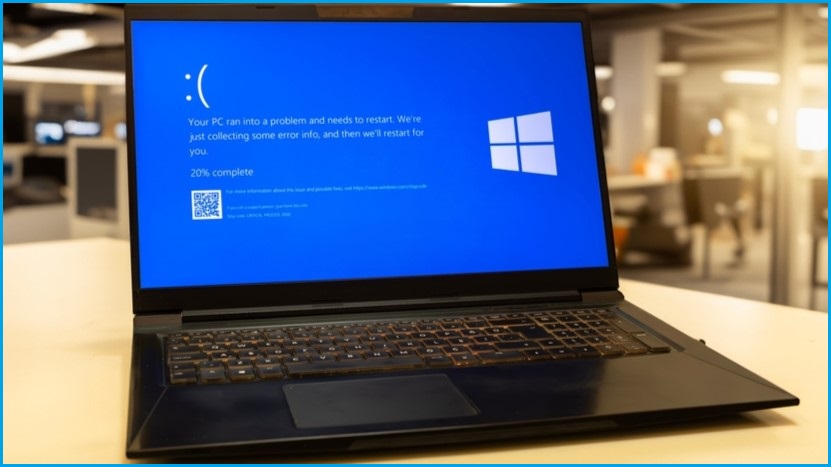It’s been a headache for Windows users for 40 years – but with the stroke of a colour palette, Microsoft has drawn a line under the storied ‘Blue Screen of Death’ (BSOD) critical error screen and is now replacing it with a minimalist black error screen.
As developers testing the latest 24H2 version of Windows 11 discovered, Microsoft has eliminated the BSOD, which would pop up filled with diagnostic information in the event of a fatal error that prevented the computer from continuing to operate.
Fully 70 per cent of such errors stem from bugs in third-party drivers, Microsoft says, with 10 per cent caused by hardware issues, five per cent caused by Microsoft code, and the remaining 15 per cent attributed to unknown causes “because the memory is too corrupt to analyse.”
The anxiety-provoking BSOD, which Microsoft officially calls a ‘blue screen error’, has been progressively softened in recent Windows versions, with technobabble replaced by a sad-face emoji, a progress indicator, and a QR code that users can scan for help.
The latest iteration dispenses with the blue screen altogether, replacing it with a black screen that says only “Your device ran into a problem and needs to restart” and lists a single ‘stop code’ alongside the name of the software component that caused the fault.
CrowdStrike crash was the last straw
The tipping point was last year’s massive CrowdStrike outage, in which a faulty software update triggered the BSOD on over 8.5 million Windows systems around the world and kicked off Congressional inquiries as well as lawsuits from customers and shareholders.
Even as CrowdStrike faced a PR disaster and forked out millions in compensation, the outage became a core driver for Microsoft’s Windows Resiliency Initiative (WRI), a broad effort the company has designed “to embed resilience and security into the Windows platform itself.”
The new crash screen change – which Microsoft calls a “simplified user interface for unexpected restarts” – is part of its efforts to restrict the ability of antivirus and other security tools, which have been given latitude to date, to access the Windows core.

The new fatal error screen takes a minimalist approach that will challenge the creativity of meme makers. Photo: Supplied
Changes to error handling mean downtime after a crash has been reduced to around two seconds, Microsoft said in a recent blog, explaining that the new “simplified user interface… pairs with the shortened experience.”
“The updated UI improves readability and aligns better with Windows 11 design principles, while preserving the technical information on the screen for when it is needed.”
Won’t somebody think of the memes?
The new black screen will be released later this northern summer on all devices running Windows 11 version 24H2 – signalling the end of an era for meme watchers who have turned the BSOD into a cultural icon and its intrusive updates into a running joke.
Even before the CrowdStrike disaster, the BSOD had come to be associated with catastrophic systems failures – leading to embarrassment for Microsoft when it was magnified on advertising billboards, stadium screens, point-of-sale terminals, and other public systems.

When shopping centre screens go wrong...Photo: David Braue
Its role as a cultural touchstone has spawned a cottage industry of BSOD-themed merchandise including hoodies, coffee mugs, posters, pillowcases, T-shirts, doona covers, and more.
While meme makers are sure to take the new change on the chin, tech observers took the time to eulogise the BSOD – which despite first appearing in 1985 became a true mainstay of modern computing with the release of Windows NT 3.1 in 1993.
And it you’re wondering why the BSOD was blue?
Former Microsoft developer John Vert previously explained that the choice was based on technical conventions in tools used by Windows NT 3.1’s developers – but said its extension to Windows 3.1 and 9x, and its persistence for the next 30 years, “is just coincidence”.










